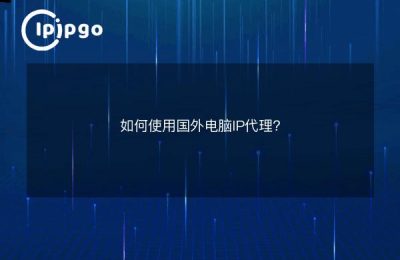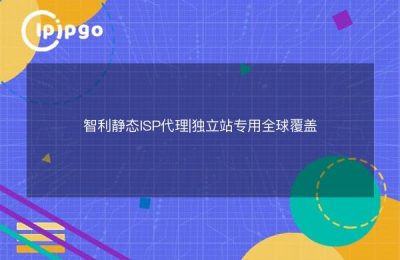
I. Definition and Role of Proxy IP
Before exploring how to use international proxy IP, let's first understand the basic concept of proxy IP. Proxy IP (i.e. Proxy IP) is an IP address that passes web requests through an intermediary (proxy server), which serves mainly to hide the real visitor's IP and change the geographic location. So, why use Proxy IP?
1.1 Privacy protection
On the Internet, our online behavior leaves a lot of traces. Using a proxy IP can hide the real IP address, avoiding the leakage of personal information and providing better privacy protection.
1.2 Geographic location camouflage
Some websites, applications or social media platforms restrict geographic access to users. By using a proxy IP, you can change the location information to enable geo-location camouflage, browse website content from different countries and experience more globalized services.
1.3 Data acquisition
Proxy IPs are also widely used in the field of data acquisition. By using multiple proxy IP nodes, more data can be captured and access frequency restrictions of websites can be bypassed.
Second, how to get the international proxy IP
To use international proxy IPs, you first need to obtain these IP addresses. Below are a few common methods of obtaining them:
2.1 Proxy IP Providers
There are many proxy IP providers offering paid proxy IP services, and users can purchase the appropriate international proxy IP according to their needs. these providers usually provide the appropriate API interface, which is convenient for users to use programmatically.
2.2 Build your own proxy server
If you have some technical skills, you can also build your own proxy server and use the IP address on the server for proxy. This approach is relatively complex, but provides a more stable and controllable proxy IP resource.
2.3 Free Proxy IP Pool
There are also some free proxy IP resources on the web, such as some open source proxy IP pool projects. The quality and stability of these resources may not be as good as paid proxy IPs, but they can be used as an experience or learning option.
C. How to configure the international proxy IP
After obtaining the international proxy IP, we need to configure it accordingly to apply it to the actual network access. The following are some common configuration methods:
3.1 Manually Configuring the Agent
For some individual applications or browsers, you can configure the proxy manually. For example, in the settings of a browser, you can specify the proxy server address and port, as well as information such as the account password. In this way, network access for that application or browser will be realized through the proxy IP.
3.2 System Global Agent
For the entire operating system, you can also set up a global proxy. This way, all network access at the operating system level is passed through the proxy IP, eliminating the need to configure it individually for each application.
3.3 Code Examples
The following is sample code for configuring a proxy IP using the Python language:
import requests
proxies = {
"http": "http://代理服务器IP:端口",
"https": "http://代理服务器IP:端口",
}
requests.get("https://www.example.com", proxies=proxies)
The above code implements the use of a proxy IP for network requests by setting the proxies parameter to a proxy IP address.
IV. Precautions for using international proxy IP
When using an international proxy IP, you also need to pay attention to the following points:
4.1 Proxy IP Stability
The stability of proxy IP is directly related to the quality and speed of network access. It is recommended to choose a stable and reliable proxy provider, or build your own proxy server to ensure the stability of the proxy IP.
4.2 Circumventing blocking
When using a proxy IP, be careful not to visit the same website or application too often, or you may be banned from the website. You can set the access interval to avoid too frequent visits to reduce the risk of being banned.
4.3 Legal compliance
When using an international proxy IP, you should comply with the relevant local laws and regulations. Some countries have some restrictions on the use of proxy IP, users need to understand and comply with local legal requirements.
V. Conclusion
The use of international proxy IP can bring us many convenient and innovative experiences, but it also needs to be used carefully and applied wisely. By understanding the definition and role of proxy IP as well as the methods of obtaining and configuring it, we can use international proxy IP more flexibly and gain more value in privacy protection, geolocation camouflage and data collection. I hope this article inspires you to enjoy the fun brought by proxy IP!








